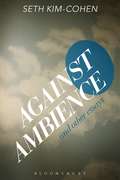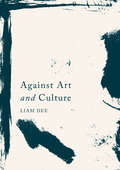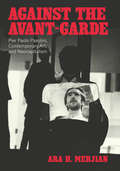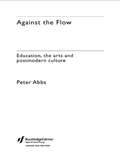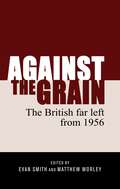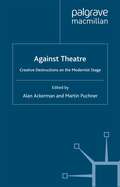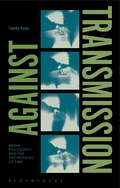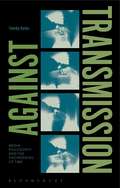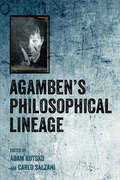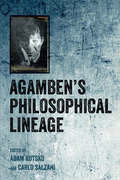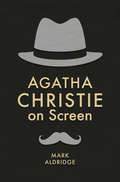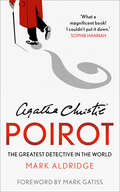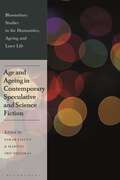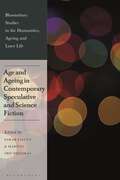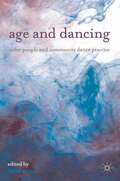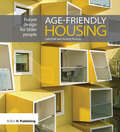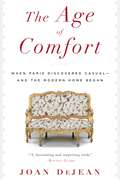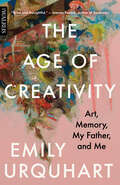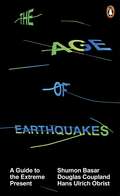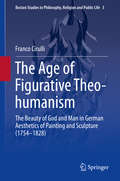- Table View
- List View
Against Ambience and Other Essays
by Seth Kim-CohenAgainst Ambience diagnoses - in order to cure - the art world's recent turn toward ambience. Over the course of three short months - June to September, 2013 - the four most prestigious museums in New York indulged the ambience of sound and light: James Turrell at the Guggenheim, Soundings at MoMA, Robert Irwin at the Whitney, and Janet Cardiff at the Met. In addition, two notable shows at smaller galleries indicate that this is not simply a major-donor movement. Collectively, these shows constitute a proposal about what we wanted from art in 2013. While we're in the soft embrace of light, the NSA and Facebook are still collecting our data, the money in our bank accounts is still being used to fund who-knows-what without our knowledge or consent, the government we elected is still imprisoning and targeting people with whom we have no beef. We deserve an art that is the equal of our information age. Not one that parrots the age's self-assertions or modes of dissemination, but an art that is hyper-aware, vigilant, active, engaged, and informed. We are now one hundred years clear of Duchamp's first readymades. So why should we find ourselves so thoroughly in thrall to ambience? Against Ambience argues for an art that acknowledges its own methods and intentions; its own position in the structures of cultural power and persuasion. Rather than the warm glow of light or the soothing wash of sound, Against Ambience proposes an art that cracks the surface of our prevailing patterns of encounter, initiating productive disruptions and deconstructions.
Against Ambience and Other Essays
by Seth Kim-CohenAgainst Ambience diagnoses - in order to cure - the art world's recent turn toward ambience. Over the course of three short months - June to September, 2013 - the four most prestigious museums in New York indulged the ambience of sound and light: James Turrell at the Guggenheim, Soundings at MoMA, Robert Irwin at the Whitney, and Janet Cardiff at the Met. In addition, two notable shows at smaller galleries indicate that this is not simply a major-donor movement. Collectively, these shows constitute a proposal about what we wanted from art in 2013. While we're in the soft embrace of light, the NSA and Facebook are still collecting our data, the money in our bank accounts is still being used to fund who-knows-what without our knowledge or consent, the government we elected is still imprisoning and targeting people with whom we have no beef. We deserve an art that is the equal of our information age. Not one that parrots the age's self-assertions or modes of dissemination, but an art that is hyper-aware, vigilant, active, engaged, and informed. We are now one hundred years clear of Duchamp's first readymades. So why should we find ourselves so thoroughly in thrall to ambience? Against Ambience argues for an art that acknowledges its own methods and intentions; its own position in the structures of cultural power and persuasion. Rather than the warm glow of light or the soothing wash of sound, Against Ambience proposes an art that cracks the surface of our prevailing patterns of encounter, initiating productive disruptions and deconstructions.
Against Art and Culture
by Liam DeeOffering a negative definition of art in relation to the concept of culture, this book establishes the concept of ‘art/culture’ to describe the unity of these two fields around named-labour, idealised creative subjectivity and surplus signification. Contending a conceptual and social reality of a combined ‘art/culture’ , this book demonstrates that the failure to appreciate the dynamic totality of art and culture by its purported negators is due to almost all existing critiques of art and culture being defences of a ‘true’ art or culture against ‘inauthentic’ manifestations, and art thus ultimately restricting creativity to the service of the bourgeois commodity regime. While the evidence that art/culture enables commodification has long been available, the deduction that art/culture itself is fundamentally of the world of commodification has failed to gain traction. By applying a nuanced analysis of both commodification and the larger systems of ideological power, the book considers how the ‘surplus’ of art/culture is used to legitimate the bourgeois status quo rather than unravel it. It also examines possibilities for a post-art/culture world based on both existing practices that challenge art/culture identity as well as speculations on the integration of play and aesthetics into general social life. An out-and-out negation of art and culture, this book offers a unique contribution to the cultural critique landscape.
Against Art and Culture
by Liam DeeOffering a negative definition of art in relation to the concept of culture, this book establishes the concept of ‘art/culture’ to describe the unity of these two fields around named-labour, idealised creative subjectivity and surplus signification. Contending a conceptual and social reality of a combined ‘art/culture’ , this book demonstrates that the failure to appreciate the dynamic totality of art and culture by its purported negators is due to almost all existing critiques of art and culture being defences of a ‘true’ art or culture against ‘inauthentic’ manifestations, and art thus ultimately restricting creativity to the service of the bourgeois commodity regime. While the evidence that art/culture enables commodification has long been available, the deduction that art/culture itself is fundamentally of the world of commodification has failed to gain traction. By applying a nuanced analysis of both commodification and the larger systems of ideological power, the book considers how the ‘surplus’ of art/culture is used to legitimate the bourgeois status quo rather than unravel it. It also examines possibilities for a post-art/culture world based on both existing practices that challenge art/culture identity as well as speculations on the integration of play and aesthetics into general social life. An out-and-out negation of art and culture, this book offers a unique contribution to the cultural critique landscape.
Against the Avant-Garde: Pier Paolo Pasolini, Contemporary Art, and Neocapitalism
by Ara H. MerjianRecognized in America chiefly for his films, Pier Paolo Pasolini (1922–1975) in fact reinvented interdisciplinarity in postwar Europe. Pasolini self-confessedly approached the cinematic image through painting, and the numerous allusions to early modern frescoes and altarpieces in his films have been extensively documented. Far less understood, however, is Pasolini’s fraught relationship to the aesthetic experiments of his own age. In Against the Avant-Garde, Ara H. Merjian demonstrates how Pasolini’s campaign against neocapitalist culture fueled his hostility to the avant-garde. An atheist indebted to Catholic ritual; a revolutionary communist inimical to the creed of 1968; a homosexual hostile to the project of gay liberation: Pasolini refused the politics of identity in favor of a scandalously paradoxical practice, one vital to any understanding of his legacy. Against the Avant-Garde examines these paradoxes through case studies from the 1960s and 1970s, concluding with a reflection on Pasolini’s far-reaching influence on post-1970s art. Merjian not only reconsiders the multifaceted work of Italy’s most prominent postwar intellectual, but also the fraught politics of a European neo-avant-garde grappling with a new capitalist hegemony.
Against the Flow: Education, The Arts and Postmodern Culture (PDF)
by Peter AbbsAt once provocative and inspiring, Against the Flow is a work of polemic from an internationally respected writer and thinker on arts education. Peter Abbs argues that contemporary education ignores the aesthetic and ethical as a result of being in thrall to such forces as the market economy and managerial and functional dictates. He identifies the present education system as being inimical to creativity and authentic learning and instead, narrowly focused on the quantitative measuring of results. This absence of a creative and ethical dimension in education has implications for art making in wider society. Art is shown as emerging from, and appealing to, the ironic postmodernist sensibility and mass media-led culture, while being devoid of philosophical significance. This book opens up a fresh and timely debate about the vital power of creativity in modern education. Drawing on examples from modern poetry, literature and visual art, it is an eloquent and passionate argument for the need to develop ethical and aesthetic energies to confront the growing vacuity of contemporary culture.
Against the Flow: Education, The Arts and Postmodern Culture
by Peter AbbsAt once provocative and inspiring, Against the Flow is a work of polemic from an internationally respected writer and thinker on arts education. Peter Abbs argues that contemporary education ignores the aesthetic and ethical as a result of being in thrall to such forces as the market economy and managerial and functional dictates. He identifies the present education system as being inimical to creativity and authentic learning and instead, narrowly focused on the quantitative measuring of results. This absence of a creative and ethical dimension in education has implications for art making in wider society. Art is shown as emerging from, and appealing to, the ironic postmodernist sensibility and mass media-led culture, while being devoid of philosophical significance. This book opens up a fresh and timely debate about the vital power of creativity in modern education. Drawing on examples from modern poetry, literature and visual art, it is an eloquent and passionate argument for the need to develop ethical and aesthetic energies to confront the growing vacuity of contemporary culture.
Against the grain: The British far left from 1956 (PDF)
by Evan Smith Matthew WorleyAgainst the grain is the first general history of the British far left to be published in the twenty-first century. Its contents cover a range of organisations beyond the Labour Party, bringing together leading experts on British left-wing politics to examine issues of class, race and gender from 1956 to the present day. The essays collected here are designed to highlight the impact made by the far left on British politics and society. Though the predicted revolution did not come, organisations such as the International Socialists, the International Marxist Group and Militant became household names in the 1970s and 1980s. Taken as a whole, the collection demonstrates the extent to which the far left has weaved its influence into the political fabric of Britain.
Against the grain: The British far left from 1956
by Evan Smith Matthew WorleyAgainst the grain is the first general history of the British far left to be published in the twenty-first century. Its contents cover a range of organisations beyond the Labour Party, bringing together leading experts on British left-wing politics to examine issues of class, race and gender from 1956 to the present day. The essays collected here are designed to highlight the impact made by the far left on British politics and society. Though the predicted revolution did not come, organisations such as the International Socialists, the International Marxist Group and Militant became household names in the 1970s and 1980s. Taken as a whole, the collection demonstrates the extent to which the far left has weaved its influence into the political fabric of Britain.
Against Theatre: Creative Destructions on the Modernist Stage (Performance Interventions)
by A. Ackerman M. PuchnerAgainst Theatre shows that the most prominent writers of modern drama shared a radical rejection of the theatre as they knew it. Together with designers, composers and film makers, they plotted to destroy all existing theatres. But from their destruction emerged the most astonishing innovations of modernist theatre.
Against Transmission: Media Philosophy and the Engineering of Time (PDF)
by Timothy BarkerIn Against Transmission Barker rethinks the history of audio-visual media as a history of analytical instruments. Rather than viewing media history as the commonly told story of synthetic media (media that make a new whole from connecting separate parts), by focusing on the analytical function of mediation Against Transmission is able to focus on the way that media that have historically been used to count, measure and analyse experience still continue to provide the condition for contemporary life. By studying the engineering of transmission, transduction and storage through the prism of process philosophy, the book interrogates how the understanding of media-as-machine may offer new ways to describe a particular phenomenological relationship to the world, asking: what can the hardware of machines that segment information into very small elements tell us about experiences of time, memory and history? This book offers both a detailed and radical investigation of the technical architecture of media such as television, computers, cameras, and cinematography. It achieves this through in-depth archive research into the history of the development of media technology, combined with innovative readings of key concepts from philosophers of media such as Harold A. Innis, Marshall McLuhan, Friedrich Kittler, Siegfried Zielinski and Wolfgang Ernst. Teaming philosophical inquiry with thorough technical and historical analysis, in a broad range of international case studies, from early experimental cinema and television to contemporary media art and innovative hardware developments, Barker shows how the technical discoveries made in these contexts have engineered the experiences of time in contemporary media culture.
Against Transmission: Media Philosophy and the Engineering of Time
by Timothy BarkerIn Against Transmission Barker rethinks the history of audio-visual media as a history of analytical instruments. Rather than viewing media history as the commonly told story of synthetic media (media that make a new whole from connecting separate parts), by focusing on the analytical function of mediation Against Transmission is able to focus on the way that media that have historically been used to count, measure and analyse experience still continue to provide the condition for contemporary life. By studying the engineering of transmission, transduction and storage through the prism of process philosophy, the book interrogates how the understanding of media-as-machine may offer new ways to describe a particular phenomenological relationship to the world, asking: what can the hardware of machines that segment information into very small elements tell us about experiences of time, memory and history? This book offers both a detailed and radical investigation of the technical architecture of media such as television, computers, cameras, and cinematography. It achieves this through in-depth archive research into the history of the development of media technology, combined with innovative readings of key concepts from philosophers of media such as Harold A. Innis, Marshall McLuhan, Friedrich Kittler, Siegfried Zielinski and Wolfgang Ernst. Teaming philosophical inquiry with thorough technical and historical analysis, in a broad range of international case studies, from early experimental cinema and television to contemporary media art and innovative hardware developments, Barker shows how the technical discoveries made in these contexts have engineered the experiences of time in contemporary media culture.
Agamben's Philosophical Lineage
by Adam Kotsko Carlo SalzaniThe first detailed appraisal of Norse assembly sites as monuments to ritual, power and symbolism
Agamben's Philosophical Lineage
by Adam Kotsko Carlo SalzaniIstanbul's Çemberlitaş Hamamı provides a case study for the cultural, social and economic functions of Turkish bathhouses over time
Agatha Christie on Screen (Crime Files)
by Mark AldridgeThis book is a comprehensive exploration of 90 years of film and television adaptations of the world’s best-selling novelist’s work. Drawing on extensive archival material, it offers new information regarding both the well-known and forgotten screen adaptations of Agatha Christie’s stories, including unmade and rare adaptations, some of which have been unseen for more than half a century. This history offers intriguing insights into the discussions and debates that surrounded many of these screen projects – something that is brought to life through previously unpublished correspondence from Christie herself and a new wide-ranging interview with her grandson, Mathew Prichard. Agatha Christie on Screen takes the reader on a journey from little known silent film adaptations, through to famous screen productions including 1974’s Murder on the Orient Express, as well as the television series of the Poirot and Miss Marple stories and, most recently, the BBC’s acclaimed version of And Then There Were None.
Agatha Christie’s Poirot: The Greatest Detective In The World
by Mark AldridgeFrom the very first book publication in 1920 to the film release of Death on the Nile in December 2020, this investigation into Agatha Christie’s Hercule Poirot celebrates a century of probably the world’s favourite fictional detective.
Age and Ageing in Contemporary Speculative and Science Fiction (Bloomsbury Studies in the Humanities, Ageing and Later Life)
by Sarah Falcus and Maricel Oró-PiquerasFocusing on the contemporary period, this book brings together critical age studies and contemporary science fiction to establish the centrality of age and ageing in dystopian, speculative and science-fiction imaginaries. Analysing texts from Europe, North America and South Asia, as well as television programmes and films, the contributions range from essays which establish genre-based trends in the representation of age and ageing, to very focused studies of particular texts and concerns. As a whole, the volume probes the relationship between speculative/science fiction and our understanding of what it is to be a human in time: the time of our own lives and the times of both the past and the future.
Age and Ageing in Contemporary Speculative and Science Fiction (Bloomsbury Studies in the Humanities, Ageing and Later Life)
Focusing on the contemporary period, this book brings together critical age studies and contemporary science fiction to establish the centrality of age and ageing in dystopian, speculative and science-fiction imaginaries. Analysing texts from Europe, North America and South Asia, as well as television programmes and films, the contributions range from essays which establish genre-based trends in the representation of age and ageing, to very focused studies of particular texts and concerns. As a whole, the volume probes the relationship between speculative/science fiction and our understanding of what it is to be a human in time: the time of our own lives and the times of both the past and the future.
Age and Dancing: Older People and Community Dance Practice
by Diane AmansThis highly readable introduction to dance with older people combines key debates and issues in the field with practical guidance, as well as a resources section including numerous 'toolkit materials'. Diane Amans, leading practitioner in Community Dance, provides the ideal beginners' guide for students, practitioners and dance artists alike.
Age-friendly Housing
by Julia Park Jeremy PorteousThis book embeds the principles of how we should approach the design of future housing for an ageing population, reminding us that this is not about ‘other people’, but about each of us. This book focuses on anticipating the needs and aspirations of the next generation of older people, and touches on what this implies for our communities, our towns and our cities, as well as for our living spaces. It will look at how well-designed buildings can facilitate the provision of care, support independence and wellbeing while providing companionship and stimulation. It will also examine how to ensure that buildings remain flexible over a long life. Dealing mainly with new-build, but with a section on adaptation and refurbishment, this book sets out the underlying design principles that should be applied and the early decisions that must be taken.
Age-friendly Housing
by Julia Park Jeremy PorteousThis book embeds the principles of how we should approach the design of future housing for an ageing population, reminding us that this is not about ‘other people’, but about each of us. This book focuses on anticipating the needs and aspirations of the next generation of older people, and touches on what this implies for our communities, our towns and our cities, as well as for our living spaces. It will look at how well-designed buildings can facilitate the provision of care, support independence and wellbeing while providing companionship and stimulation. It will also examine how to ensure that buildings remain flexible over a long life. Dealing mainly with new-build, but with a section on adaptation and refurbishment, this book sets out the underlying design principles that should be applied and the early decisions that must be taken.
The Age of Comfort: When Paris Discovered Casual--and the Modern Home Began
by Joan DeJeanToday, it is difficult to imagine a living room without a sofa. When the first sofas on record were delivered in seventeenth-century France, the result was a radical reinvention of interior space. Symptomatic of a new age of casualness and comfort, the sofa ushered in an era known as the golden age of conversation; as the first piece of furniture designed for two, it was also considered an invitation to seduction. With the sofa came many other changes in interior space we now take for granted: private bedrooms, bathrooms, and the original living rooms. None of this could have happened without a colorful cast of visionaries-legendary architects, the first interior designers, and the women who shaped the tastes of two successive kings of France: Louis XIV's mistress Madame de Maintenon and Louis XV's mistress Madame de Pompadour. Their revolutionary ideas would have a direct influence on realms outside the home, from clothing to literature and gender relations, changing the way people lived and related to one another for the foreseeable future.
The Age of Creativity: Art, Memory, My Father, and Me
by Emily UrquhartA moving portrait of a father and daughter relationship and a case for late-stage creativity from Emily Urquhart, the bestselling author of Beyond the Pale: Folklore, Family, and the Mystery of Our Hidden Genes. “The fundamental misunderstanding of our time is that we belong to one age group or another. We all grow old. There is no us and them. There was only ever an us.” — from The Age of CreativityIt has long been thought that artistic output declines in old age. When Emily Urquhart and her family celebrated the eightieth birthday of her father, the illustrious painter Tony Urquhart, she found it remarkable that, although his pace had slowed, he was continuing his daily art practice of drawing, painting, and constructing large-scale sculptures, and was even innovating his style. Was he defying the odds, or is it possible that some assumptions about the elderly are flat-out wrong? After all, many well-known visual artists completed their best work in the last decade of their lives, Turner, Monet, and Cézanne among them. With the eye of a memoirist and the curiosity of a journalist, Urquhart began an investigation into late-stage creativity, asking: Is it possible that our best work is ahead of us? Is there an expiry date on creativity? Do we ever really know when we’ve done anything for the last time?The Age of Creativity is a graceful, intimate blend of research on ageing and creativity, including on progressive senior-led organizations, such as a home for elderly theatre performers and a gallery in New York City that only represents artists over sixty, and her experiences living and travelling with her father. Emily Urquhart reveals how creative work, both amateur and professional, sustains people in the third act of their lives, and tells a new story about the possibilities of elder-hood.
The Age of Earthquakes: A Guide to the Extreme Present
by Douglas Coupland Hans Ulrich Obrist Shumon BasarPlanet Earth needs a self-help book, and this is itThe future is happening to us far faster than we thought it would and this book explains whyFifty years after Marshall McLuhan's ground breaking book on the influence of technology on culture The Medium is the Massage, Shumon Basar, Douglas Coupland and Hans Ulrich Obrist extend the analysis to today, touring the world that's redefined by the Internet, decoding and explaining what they call the 'extreme present'.The Age of Earthquakes is a quick-fire paperback, harnessing the images, language and perceptions of our unfurling digital lives. The authors invent a glossary of new words to describe how we are truly feeling today; and 'mindsource' images and illustrations from over 30 contemporary artists. Wayne Daly's striking graphic design imports the surreal, juxtaposed, mashed mannerisms of screen to page. It's like a culturally prescient, all-knowing email to the reader: possibly the best email they will ever read.Welcome to The Age of Earthquakes, a paper portrait of Now, where the Internet hasn't just changed the structure of our brains these past few years, it's also changing the structure of the planet. This is a new history of the world that fits perfectly in your back pocket.
The Age of Figurative Theo-humanism: The Beauty of God and Man in German Aesthetics of Painting and Sculpture (1754-1828) (Boston Studies in Philosophy, Religion and Public Life #3)
by Franco CirulliThis is a comprehensive, integrated account of eighteenth and early nineteenth century German figurative aesthetics. The author focuses on the theologically-minded discourse on the visual arts that unfolded in Germany, circa 1754-1828, to critique the assumption that German romanticism and idealism pursued a formalist worship of beauty and of unbridled artistic autonomy. This book foregrounds what the author terms an “Aesthetics of Figurative Theo humanism”. It begins with the sculptural aesthetics of Johann Joachim Winckelmann and Gottfried Herder before moving on to Karl Philipp Moritz, Wilhelm Heinrich Wackenroder and Friedrich Schelling. The reader will discover how this aesthetic tradition, after an initial obsession with classical sculpture, chose painting as the medium more suited to the modern self’s exploration of transcendence. This paradigm-shift is traced in the aesthetic discourse of Friedrich Schlegel and Georg Wilhelm Friedrich Hegel. In this work, the widespread prejudice that such aesthetics initiated a so-called “Modern Grand Narrative of the Arts” is deconstructed. One accusation directed at 18th century aesthetics has been that it realised into “Art” what had previously been a living, rich tissue of meaning: this work shows how Figurative Theo humanism's attention to aesthetic values was never detached from deeper theological and humanistic considerations. Furthermore, it argues that this aesthetic discourse never forgot that it emerged from modern disenchantment—far from occluding the dimension of secularization, it draws poignant meaning from it. Anyone with an interest in the current debates about the scope and nature of aesthetics(philosophers of art, theology, or religion) will find this book of great interest and assistance.
